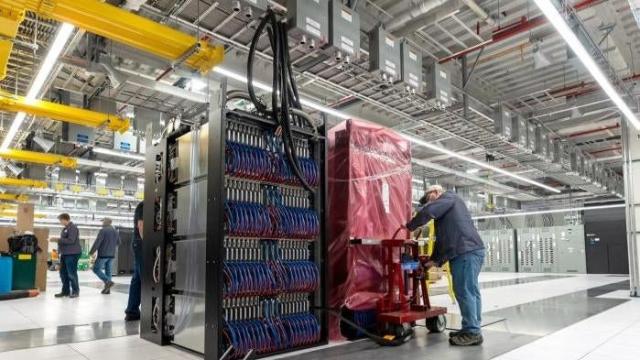Though the U.S. may be lagging behind other countries in terms of consumer broadband and wireless speeds, it can now at least claim the mantle as the top dog of supercomputers. Well, maybe anyway.
That’s thanks to Frontier, a new supercomputer developed by Oak Ridge National Laboratory (ORNL) which this week became the first machine capable of demonstrating “exascale” performance, a highly coveted computing benchmark roughly equivalent to one quintillion operations per second. That mind-boggling number comes out to roughly a billion, billion calculations.
With the demonstrations, ORNL says Frontier stands out as the world’s first true exascale machine. Frontier finished first in this year’s Top500 rankings measuring the world’s most powerful systems. That’s big news for ORNL, but potentially even bigger news from the U.S. science and defence apparatus which has spent years investing to beat out rival countries in developing similar high-performance computers.
Researchers behind Frontier believe its hefty new computing power could solve complex scientific problems and potentially lead to breakthroughs in climate modelling, drug discovery, and other crucial areas. Though still in testing, ORNL will reportedly eventually see use by the U.S. Air Force and U.S. Department of Energy in 2023. The DOE previously pledged $US1.8 ($2) billion to build three machines capable of exascale performance.
“Scientists and engineers from around the world will put these extraordinary computing speeds to work to solve some of the most challenging questions of our era, and many will begin their exploration on Day One,” Jeff Nichols, ORNL’s Associate Lab Director for Computing and Computational Sciences said in a statement.
All that power requires significant amounts of physical resources as well. According to ORNL, Frontier is made up of 74 HPE Cray EX supercomputer cabinets each weighing more than 3,629 kg. Frontier uses more than 9,400 AMD-powered nodes and requires over 145 km of networking cables. Around 22,712 l of water flow through the system every minute, ORNL says.
Frontier is powered by Hewlett Packard’s Cray EX platform and uses AMD’s EPYC Processors as well as AMD Instinct accelerators. “Innovation and delivering more performance and efficiency for supercomputers is critical to addressing the world’s most complex challenges,” AMD Data Centre Solutions Business Group Senior Vice President and General Manager Forrest Norrod said in a statement.
U.S. leaps ahead of the pack
Frontier’s whopping performance not only puts the U.S. ahead of other countries in terms of sheer supercomputer performance but does so with a sizable lead. Prior to Frontier, the top spot for supercomputer performance was held by Japan’s ARM A64X Fugaku system with an HPL benchmark score of 442 PFlop/s. That’s powerful in its own right but less than half Frontier’s peak 1.1 exaflops performance.
Frontier was one of four U.S.-built supercomputers to finish in the Top10 of global supercomputer performance. These included Summit, an IBM-built system, as well a system designed at the Lawrence Livermore National Laboratory called Sierra. Two Chinese-made supercomputers, one developed by the country’s National Research Centre of Parallel Computer Engineering & Technology and another by China’s National University of Defence Technology, also cracked the Top10 list.
And while Frontier is indeed the fastest official supercomputer measured by scientists involved in the Top500 rankings, there are rumours China has developed at least two of its own exascale capable machines. If true, that would mark a blow to the U.S. security state which has forged an antagonistic relationship with Chinese supercomputer developers, even going as far as to place seven companies on a trade blacklist last year over alleged national security concerns.
